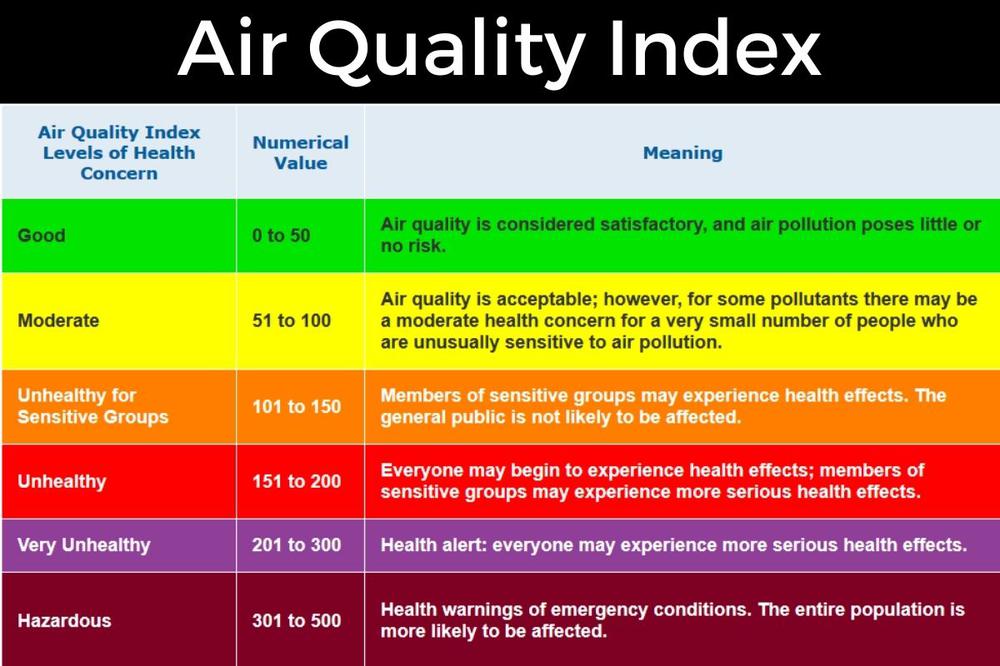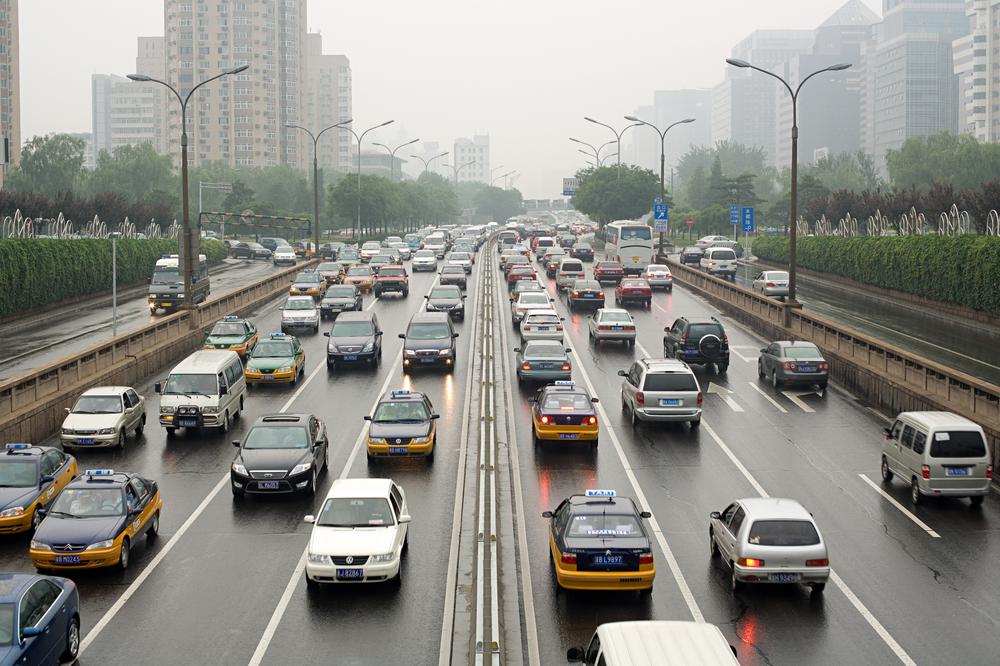Local air quality has an impact on how you live and breathe. It can fluctuate from day to day, or even hour to hour, much like the weather. The EPA and your local air quality agency have tried to make outdoor air quality information as simple to obtain and comprehend as weather forecasts. The Air Quality Index is a critical instrument in this endeavor. The AQI is used by the EPA and local governments to convey specific information about your local air quality, how dirty air may impact you, and how you can protect your health.
What exactly is the AQI?
The Air Quality Index (AQI) is a daily air quality index used to report air quality. It shows you the level of pollution in the air and what health implications may be a worry. The AQI focuses on the health impacts that may occur within a few hours or days of breathing in polluted air. The AQI is used to calculate four key air pollutants that the Clean Air Act regulates:
- Carbon monoxide
- Ground-level ozone
- Particle pollution
- Sulfur dioxide
The EPA has developed national air quality guidelines for each of these contaminants to safeguard public health. The EPA is presently evaluating the national nitrogen dioxide air quality standard. If the standard is changed, the AQI will change as well.

How Does the Air Quality Index Work?
Consider the AQI to be a yardstick with a scale of 0 to 500. The higher the AQI number, the more polluted the air is and the greater the health risk. An AQI score of 50, for example, implies good air quality with little or no potential to harm public health. In contrast, an AQI value of 300 or more reflects air pollution that is so dangerous that everyone may suffer catastrophic consequences. An AQI score of 100 corresponds typically to the pollutant’s national air quality standard, which is the threshold set by the EPA to safeguard public health. AQI scores of 100 or less are typically regarded as good. When AQI values exceed 100, air quality is deemed unhealthy—first for particularly vulnerable groups of individuals, then for everyone as AQI values rise.
What Do the AQI Readings Indicate?
The AQI is designed to help you understand what local air quality implies for your health. The AQI is broken into six degrees of health concern to make it easier to grasp. As seen below, each category correlates to a distinct level of health concern.
Good: Your community’s AQI value is between 0 and 50. The air quality is adequate and offers little or no health risk.
The AQI is moderate, ranging between 51 and 100. Although the air quality is satisfactory, pollution in this range may represent a moderate health risk to a very small number of people. People who are particularly vulnerable to ozone or particle pollution may develop respiratory problems.
Unhealthy for Sensitive Groups: When AQI levels range from 101 to 150, individuals of sensitive groups may have health impacts, but the broader population is unlikely to be harmed.
Ozone: People with lung problems, youngsters, the elderly, and those who spend time outside are deemed sensitive and at a higher risk.
Particle pollution: People with heart or lung problems, older persons, and children are deemed sensitive and at a higher risk.
Unhealthy: When AQI readings range between 151 and 200, everyone may begin to face health impacts. Members of vulnerable populations may suffer more significant health consequences.
Very Unhealthy: AQI readings between 201 and 300 cause a health alert, which means everyone may suffer from more significant health problems.
Dangerous: AQI levels of over 300 cause health warnings of emergency circumstances. Serious health issues are significantly increased and more likely to afflict the entire community.

How is the AQI of a community determined and reported?
Every day, sensors at over a thousand places around the country report concentrations of the primary pollutants.
Using EPA-developed standard procedures, these raw readings are transformed into a single AQI value for each pollutant (ground-level ozone, particle pollution, carbon monoxide, and sulfur dioxide). The highest AQI reading is given as the day’s AQI value.
State and municipal governments must report the AQI to the public every day. The requirement is for cities with a population of 350,000 or greater. As a public health service, many smaller localities also report the AQI.
When the AQI exceeds 100, organizations must notify which populations, such as children or those with asthma or heart disease, may be vulnerable to pollution. If the AQI for two or more pollutants exceeds 100 on a particular day, authorities must notify all populations who are susceptible to those pollutants. For example, if a community’s AQI for ozone is 130 and 101 for particle pollution, the AQI for that day will be 130 for ozone. The alerts would also mention that particle pollution levels were high, and they would advise people who are susceptible to ozone or particle pollution on how to safeguard their health.
Many cities also publish AQI projections for the next day. These predictions assist local inhabitants in protecting their health by notifying them to schedule intense outdoor activities when air quality is better.
Because the AQI is a nationwide index, the values and colors used to depict local air quality and degrees of health risk are consistent.
What Are the Average AQI Levels in Most Communities?
In many towns across the United States, AQI levels are typically below 100, with higher levels happening just a few times each year. However, larger cities often have higher levels of air pollution than smaller cities. Therefore their AQI readings may surpass 100 on a more frequent basis. AQI readings above 200 are uncommon, while AQI values above 300 are exceedingly unusual, occurring only during catastrophic occurrences like forest fires. By visiting www.epa.gov/aircompare/, you can compare the air quality of U.S. cities and learn about quality trends in your region.
AQI levels might change from season to season. Carbon monoxide levels may be high in some regions throughout the winter because cold weather makes it harder for automobile emission control systems to function correctly. Because heat and sunshine stimulate ozone generation, ozone levels are generally more significant in the summer. Particle pollution may be dangerous at any time of year.
AQI levels can also change based on the time of day. Ozone levels frequently peak in the late afternoon and early evening. During morning and evening traffic hours, carbon monoxide levels may be elevated. Particle pollution can be severe at any time of day, although it is generally worse near major roads, especially during morning and evening rush hours.
What is the Best Way to Track Air Quality Levels?
The Environmental Protection Agency operates the website and app AirNow. It contains a separate fire and smoke map that tracks smoke plumes using portable sensors, an excellent tool for helping you and your family avoid filthy air during wildfires.

What Are the Negative Consequences of Poor Air Quality?
Even if the daily air quality is not considered harmful, some experts believe you may still experience detrimental consequences. The impacts of air pollution might be modest, such as eye and throat discomfort, or severe, such as heart and respiratory problems. They can also remain even after the air has cleared since pollution can promote lung tissue inflammation and increase susceptibility to infections.
Fine particles in smoke, ash, and dust can fill the air during wildfire season.
The PM 2.5 measurement, which measures the concentration of particles smaller than 2.5 micrometers, is used by the Air Quality Index to track pollution. These tiny particles, when breathed, can raise the risk of heart attacks, malignancies, and acute respiratory infections, especially in youngsters and the elderly.
Furthermore, some studies show that wildfire smoke is more hazardous to the lungs than ordinary urban air pollution. This is because t includes a unique combination of particles that activate inflammatory cells deep inside the lungs while inhibiting other cells that can decrease the inflammatory response later.
During the summer, smoke pollutants and higher temperatures can also increase ozone pollution.
How Can I Maintain My Health When Air Quality is Poor?
You can do many things to help maintain your health when the Air Quality Index levels are poor. Below are just a few:
- If possible, stay indoors with the windows and doors closed.
- Set your air conditioning to run continually rather than on auto cycle. It is also beneficial to close the fresh air intake so that smoke does not enter the house. Finally, install a high-efficiency air filter with a MERV rating of 13 or higher if your system permits it.
- Use a portable air purifier to minimize indoor particulate matter.
- Avoid frying meals, which might contribute to increased indoor smoke.
- Exercising or mowing the grass are examples of rigorous outdoor activities to avoid.
- Don’t smoke.
- Don’t exercise outside if the Air Quality Index is greater than 150.

Staying Healthy When Air Quality is Poor
The responsibility for global air quality rests with every one of us. It is critical to understand air quality and what we can do to decrease pollution, whether at home or at work. Braden Filtration manufactures high-quality filtration products for natural gas combustion turbines used in the generation of electricity. All across the world, these high-efficiency technologies are treating and safeguarding gas turbines from challenging atmospheric conditions all over the world.
We hope this article has helped you understand the Air Quality Index, how it works, the dangers of air pollution, and how to protect yourself. Remember, it’s essential to stay safe and healthy during times of poor air quality. So, check your local AQI levels daily for updates on when to avoid outdoor activity. And don’t forget to share this information with your friends and family!


